02.08.2020: It was time again for the annual EAS Summer Fly-In, which took place during the last three days at Langenthal airfield (LSPL). I have missed the one of last year, as I was on business in Australia, so I absolutely wanted to attend this year’s event. It was however not clear for quite a while whether it could take place at all, due to the Covid-19 pandemic, but the board of our club finally decided to go ahead with it under some Covid-19 related restrictions. These included canceling all activities which would have been open for the general public, such as allowing people to come and see the planes and glider building for visiting kids etc., but also implementing some social distancing rules and contact tracing for those who attended.
I flew in already on Friday afternoon, under record temperatures of above 30 degrees in Lommis, and a zero degree level of around 4,400 m / 15’000 ft (I didn’t fly that high..). The high temperature, combined with a fairly high humidity limited visibility a bit. Not that this would have had impacted flying, but the scenic view over the mountains was less spectacular than normal, at least shortly after departure.

The flight from Lommis to Langenthal can be made in less than 40 minutes with the SportCruiser, but I decided to do a little detour through the mountains. I took the route over the Lake of the Four Cantons, below the top ot the Rigi moutain, as well as the city of Lucerne, both seen from 9’000 ft.
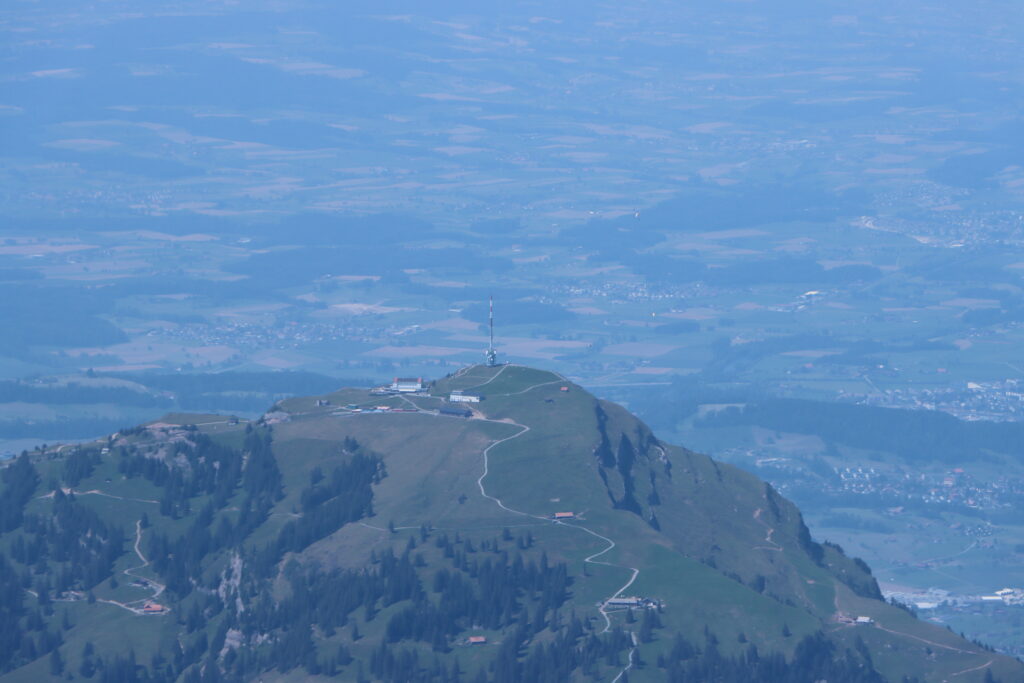

I then continued via the Brünig pass and overhead Meiringen airbase towards the Grosse Scheidegg, a mountain pass of 1’962 m / 6’437 ft. To the left (South) of the summit lies the Wetterhorn, which is 3’692 m / 12’113 ft high, so 1’730 m / 5’676 ft above the pass. That’s a pretty spectacular drop, no wonder that the area is popular with base jumpers.

I then continued toward the Eiger and the Jungfraujoch, which were surrounded by some pretty spectacular clouds. Below the Eiger north face, the Jungfraujoch lies just behind it.
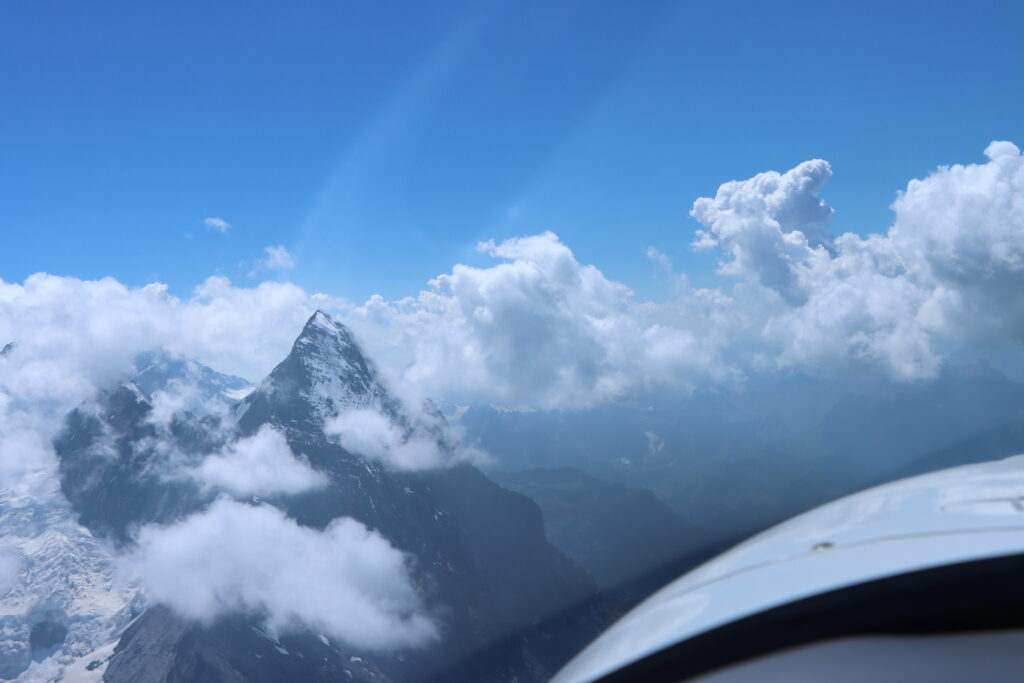
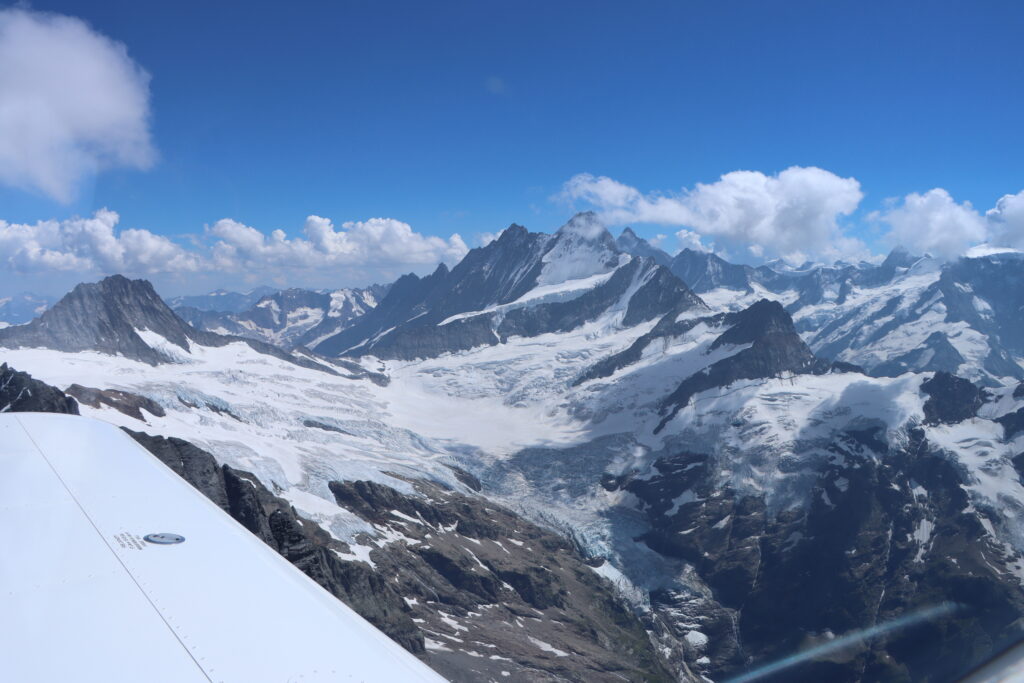
Clouds blocked the direct route towards the Jungfraujoch, as can be seen below, so I had to fly around them.

I had a glimpse on the observatory on the Jungraujoch through a gap in the clouds…
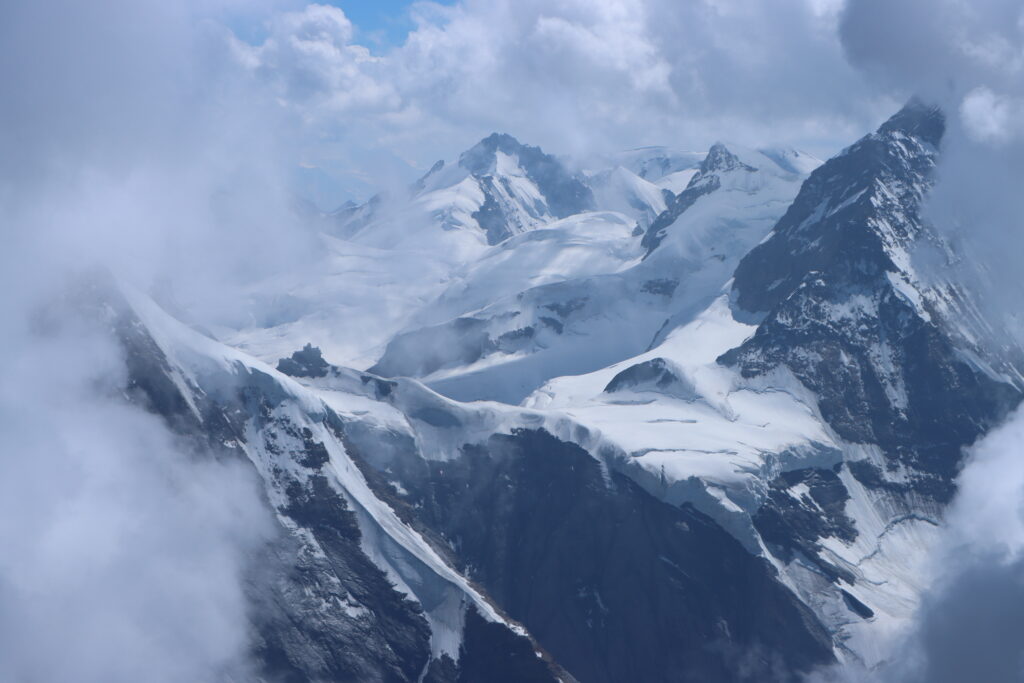
…but once I had flown around them the view was as spectacular as always. Behind the observatory one can see the Aletsch glacier, with nearly 23 km the longest one in the alps.

The picture below gives a better impression of the scenery, but to see that one has to climb to at least 12’000 ft as the Jungfraujoch (Joch = pass) is at 3’466 m / 11’371 ft and the observatory at 3’571 m / 11’716 ft. To cross over the Joch towards the glacier, 13’000 ft are the minimum, depending on wind conditions.
A Belgian visitor at the EAS meeting asked me why we most of the time use ft for altitudes rather than FL, which they do anywhere as soon as they climb to above 5’000 or 6’000 ft. I told him that even when flying at 13’000 ft over e.g. the Jungfraujoch we still operate in airspace G, which in Switzerland covers any airspace up to 2’000 ft above ground outside airspaces C and D, and that also at those altitudes the true separation from the ground is important, as in the example above when passing over the Jungfraujoch.
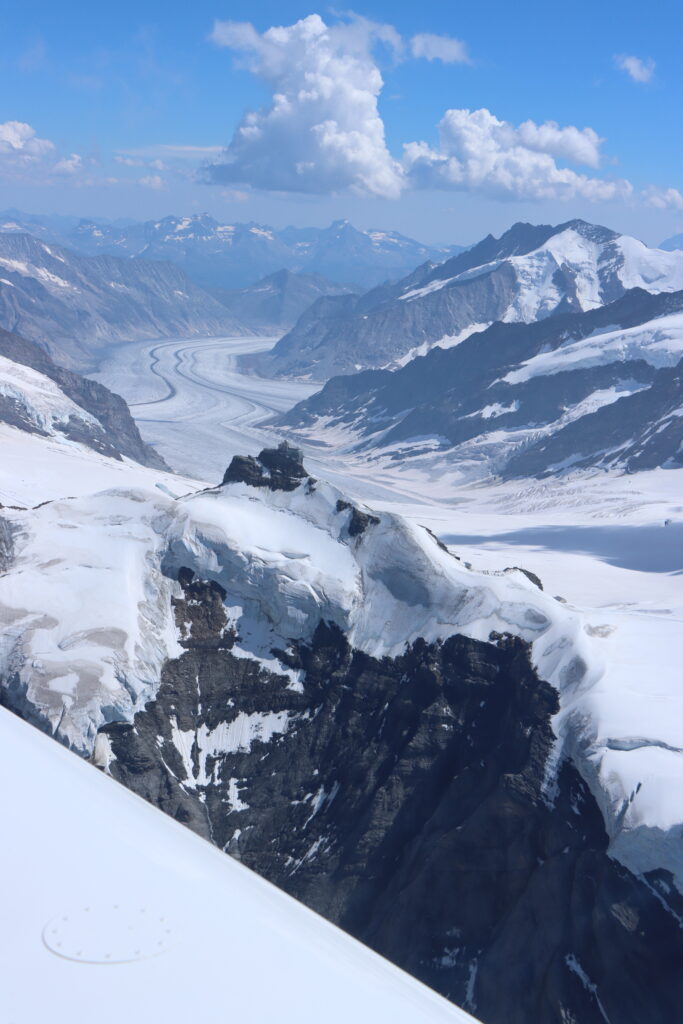
From the Jungraujoch it was all downhill towards Langenthal airfield, around 40 miles at 110 kts, loosing more than 10’000 ft of altitude in 20 minutes.
When landing I experienced an unpleasant surprise. There was a significant of shimmy of the front wheel, as I had never before experienced it. Luckily the SportCruiser has a powerful elevator, so I could offload the front wheel while still braking with the main wheel brakes down to a fairly low speed. After landing Viktor proposed to help me fix that immediately, and as it was only 16:00 the local maintenance workshop was still open. They were very helpful, lending me some tools and a set of thin washers, which are required to adjust the friction of the front wheel axle to prevent shimmy. It took us maybe 45 minutes to fix that, thanks to the EAS spirit and to the support of the staff at Airla Aircraft Service GmbH.
After that I put up my tent and went for a beer, at 32 degrees a welcome way to cool down a bit.
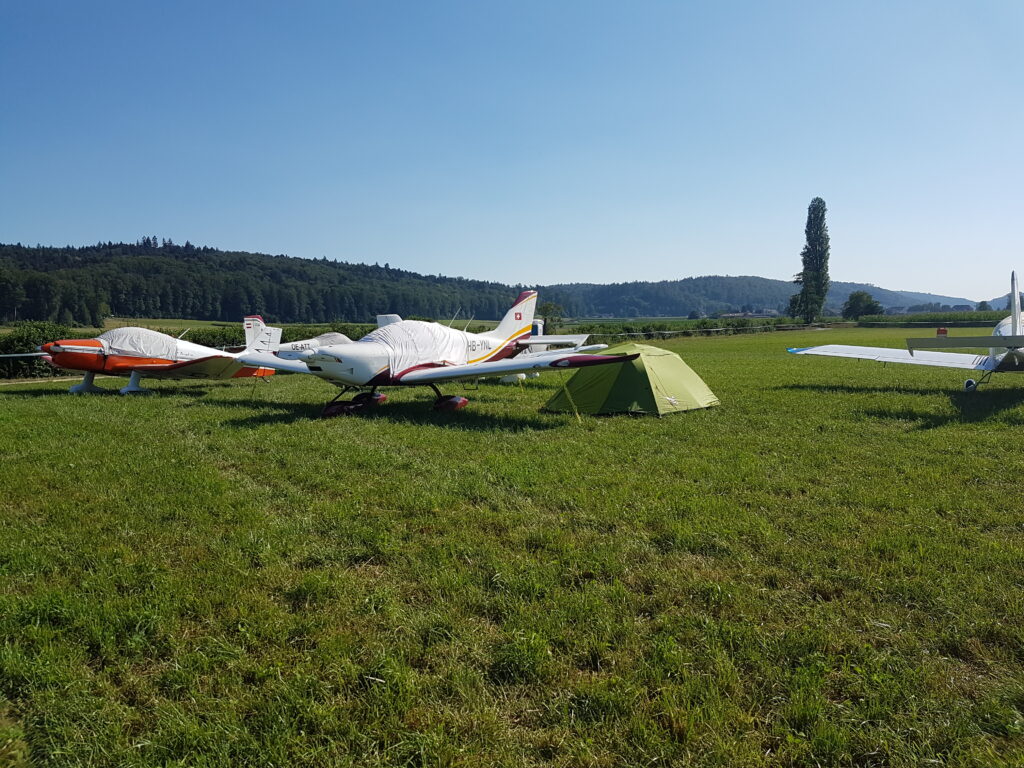

I got up at 6, as I do every day, I enjoy the early morning with the sun rising.
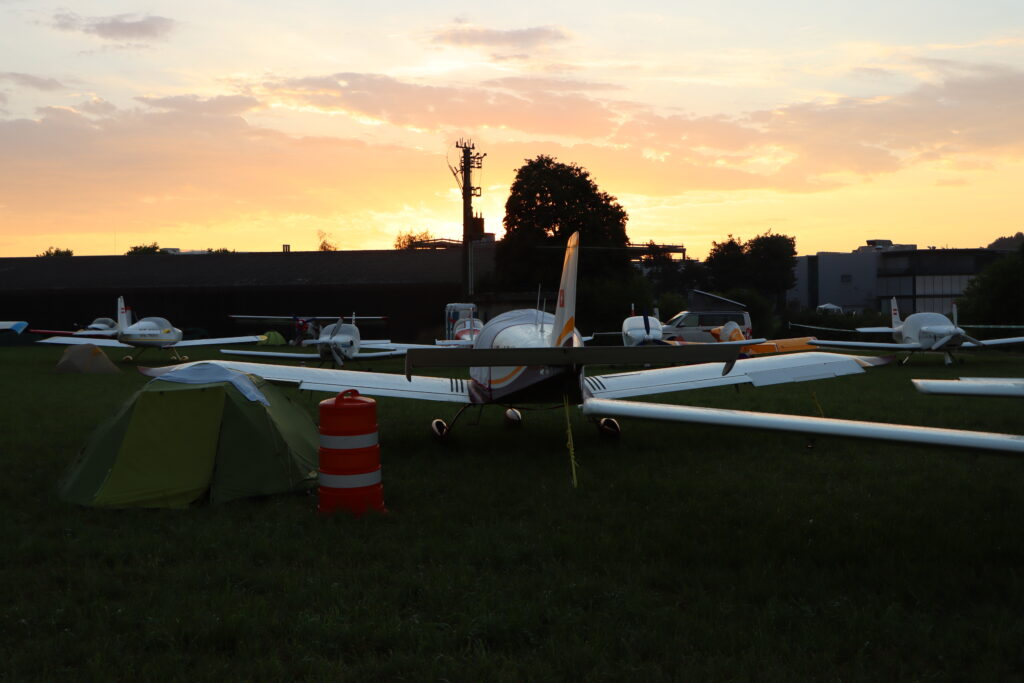

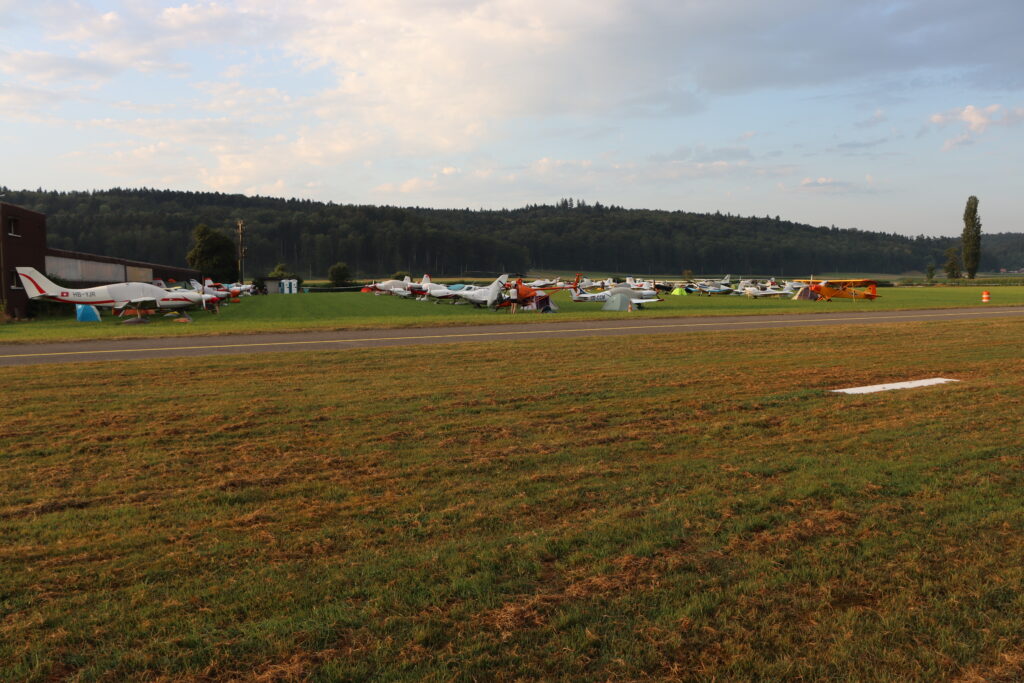
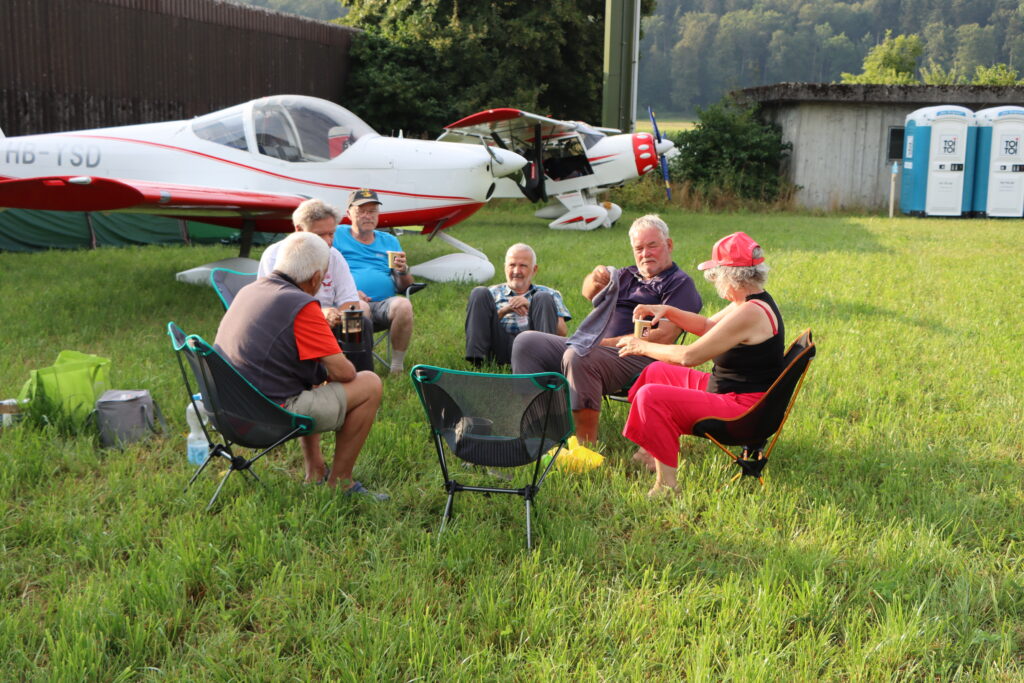

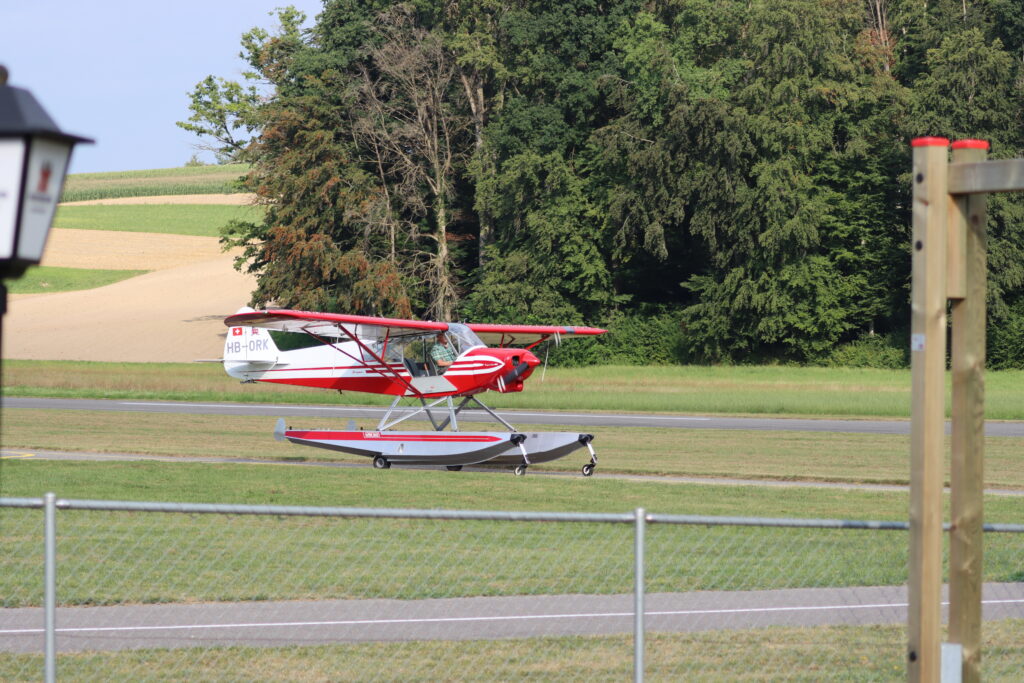
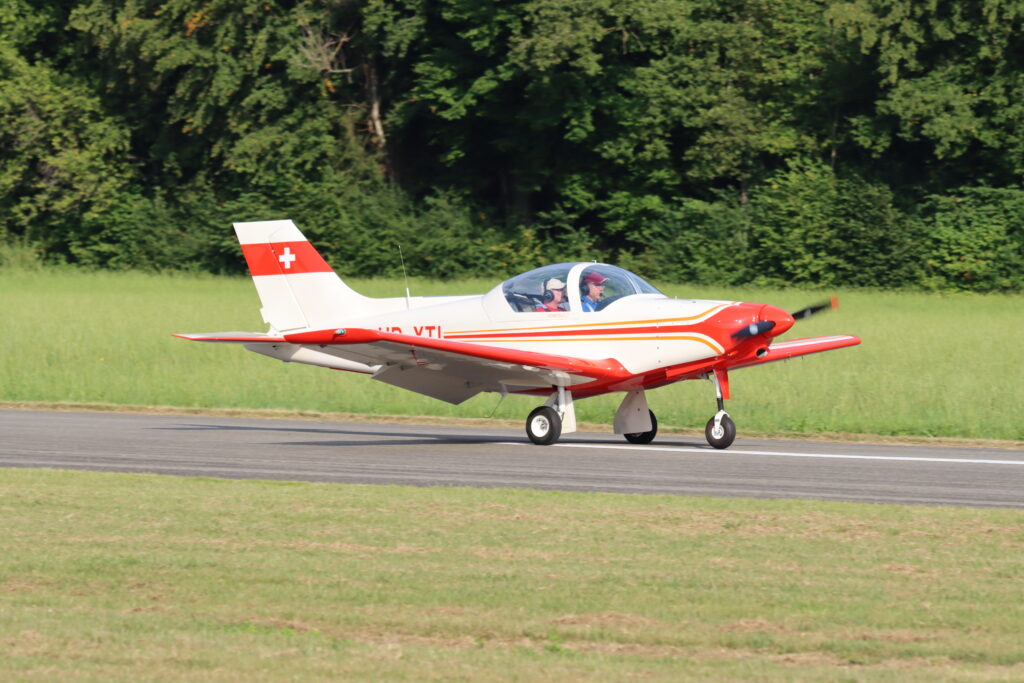
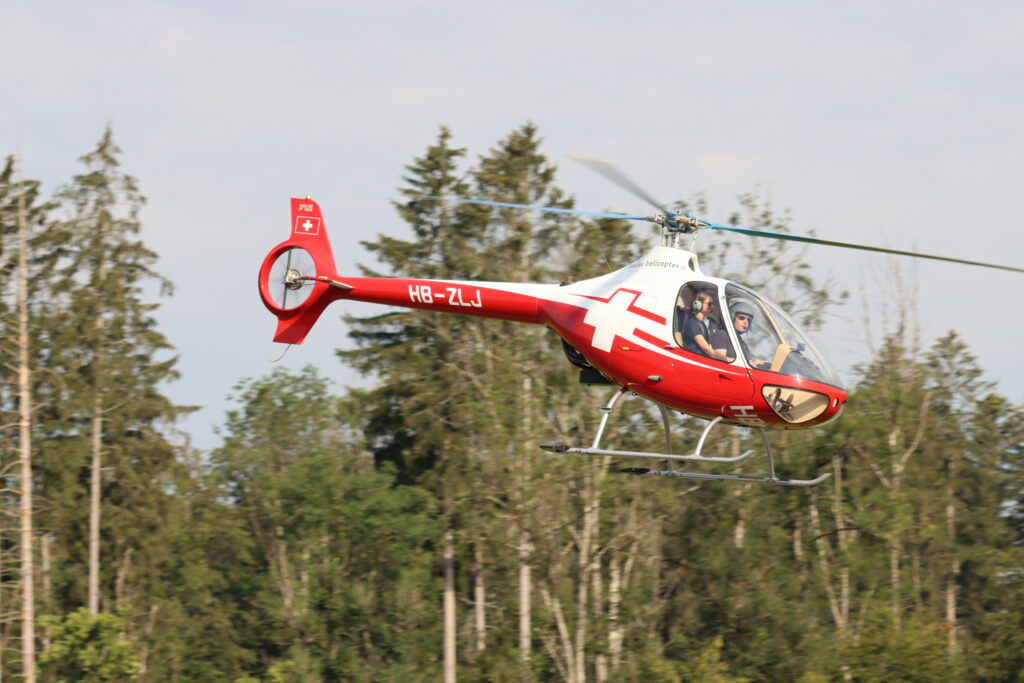
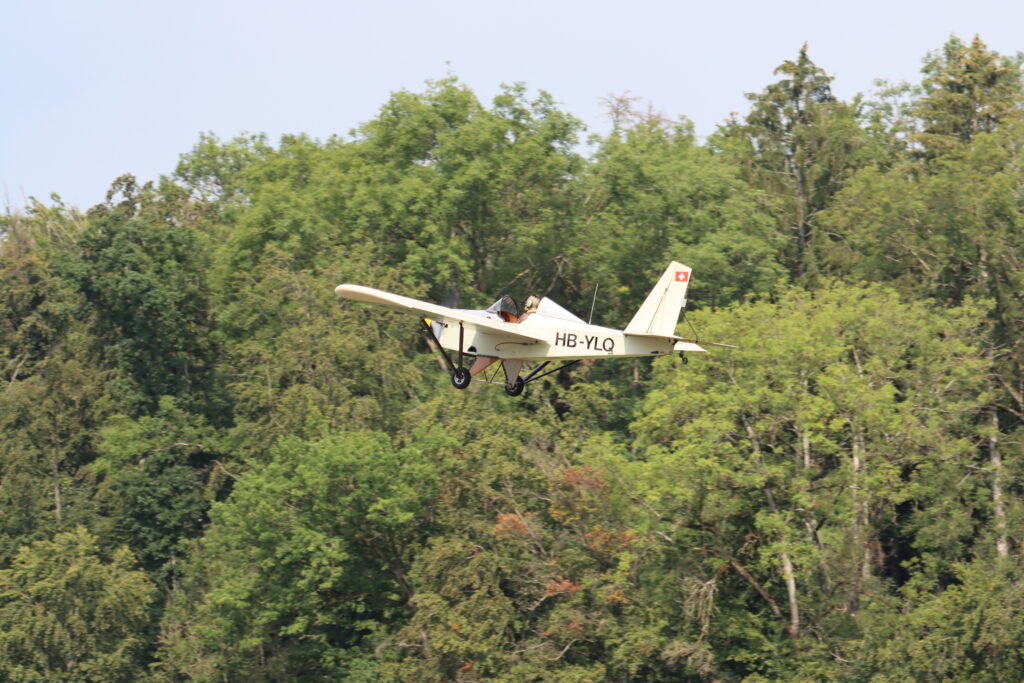
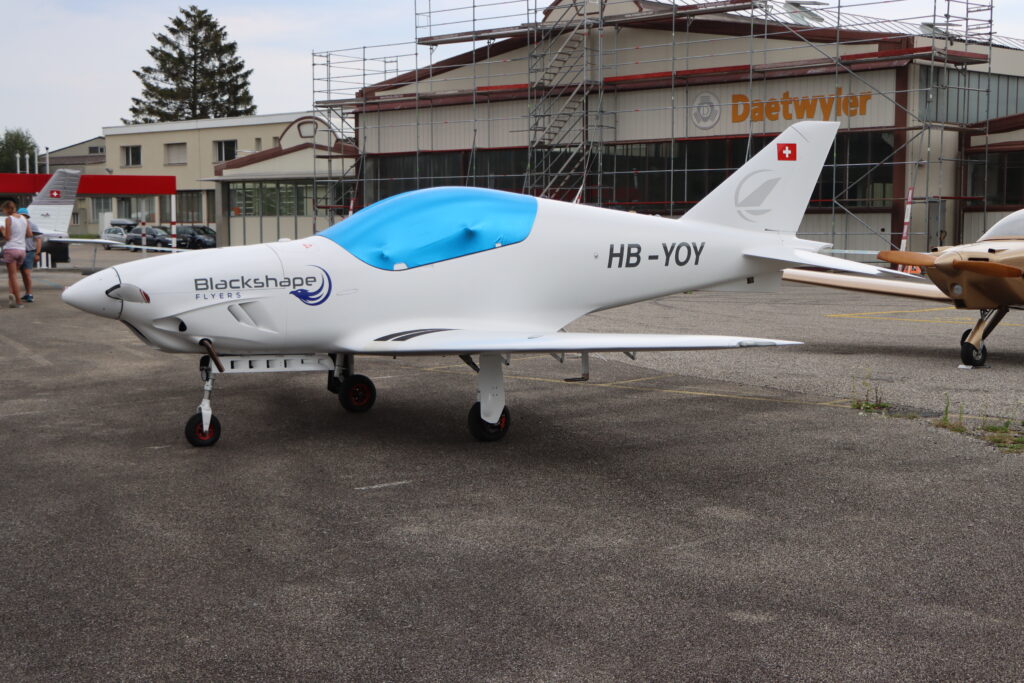


26.08.2020: I took four weeks of holidays starting on Monday, so today we left for northern Germany and Denmark. The current Covid situations doesn’t leave much room to pick holiday destinations, so we decided to go and visit friends in Denmark, and stop at some places in Germany we always wanted to see, but never found the time for.
One of these places, which is aviation related, is the Wasserkuppe, the highest mountain in the Rhön mountains near Fulda. For those who have flown gliders like me that is a well know place, many actually call it the birthplace of gliding. The moutain is 950 m high, not much for us in Switzerland but quite significant for central Germany. It’s shape and locations permitted launching gliders with bungees against the wind wherever it comes from, which was a prerequisite for flying gliders in the early days.
The “Flug-Sport-Vereinigung (FSV) Darmstadt”, a predecessor of the “Akademische Fliegergruppe Darmstadt”, which is still an important academic research organisation on gliders, started flying from the Wasserkuppe in 1911. Since then the Wasserkuppe is the German centre of gliding. Today it houses an airfield, various hangars, maintenance facilities, dormitories for camps, the oldest flying school for gliders in the world and the German Glider Museum. In addition there is also a meteorological station on the Wasserkuppe, as well as some leftovers from a spying stating of the cold war, as the Wasserkuppe was close to the former border between East- and West-Germany.
Below some views from the Wasserkuppe in different directions.



The German Glider Museum was the main reason for me wanting to visit the Wasserkuppe, as I started flying gliders in 1977. I had to stop flying for health reasons in 1980, but those four years of flying gliders kept me trying to get back into the air for over twenty years. I finally managed to get operated and get a medical again in 2001. Even though I then turned to flying motorplanes, I still feel like being a glider pilot.
The museum opened in 1987, and was expanded in 2006. It consists of two large buildings, in which around seventy gliders are exhibited. Below two pictures form the two buildings.
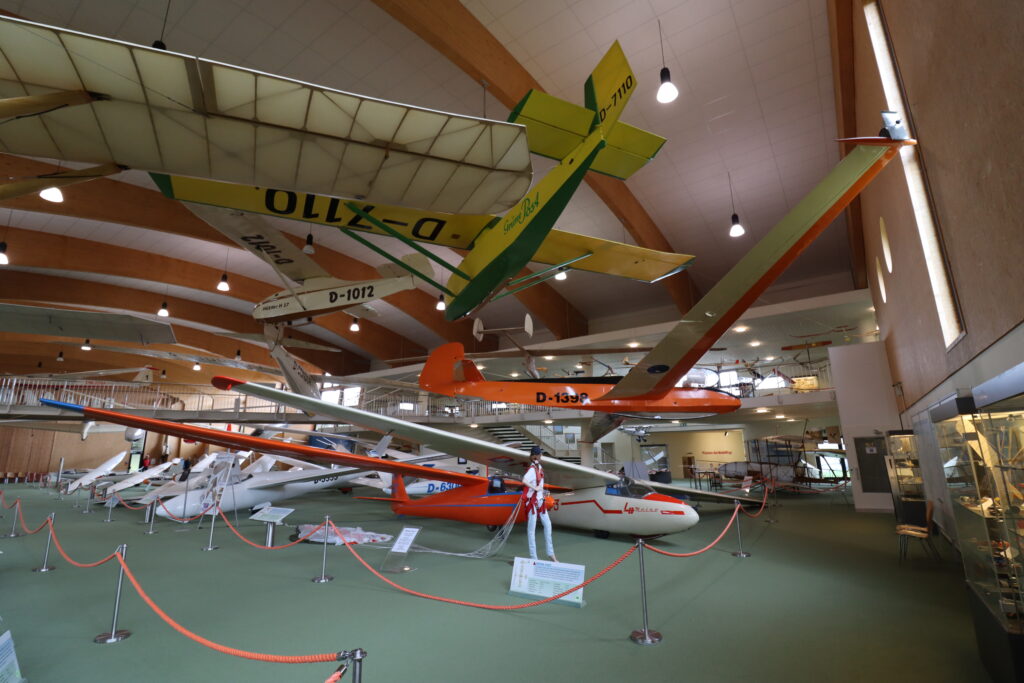
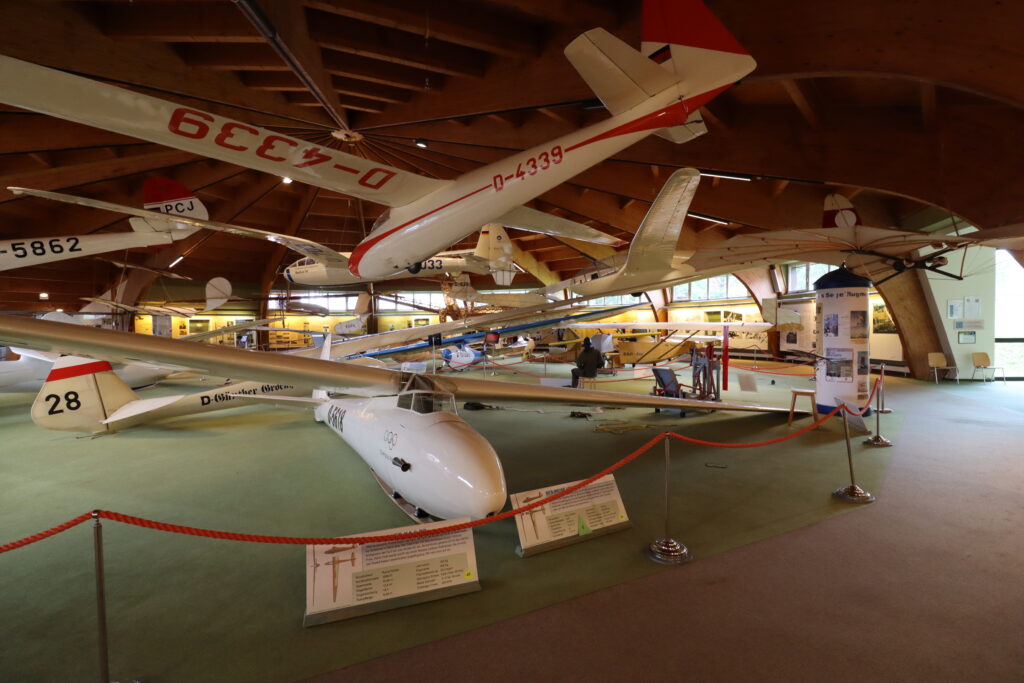
Between the many gliders one can find some old ones,…
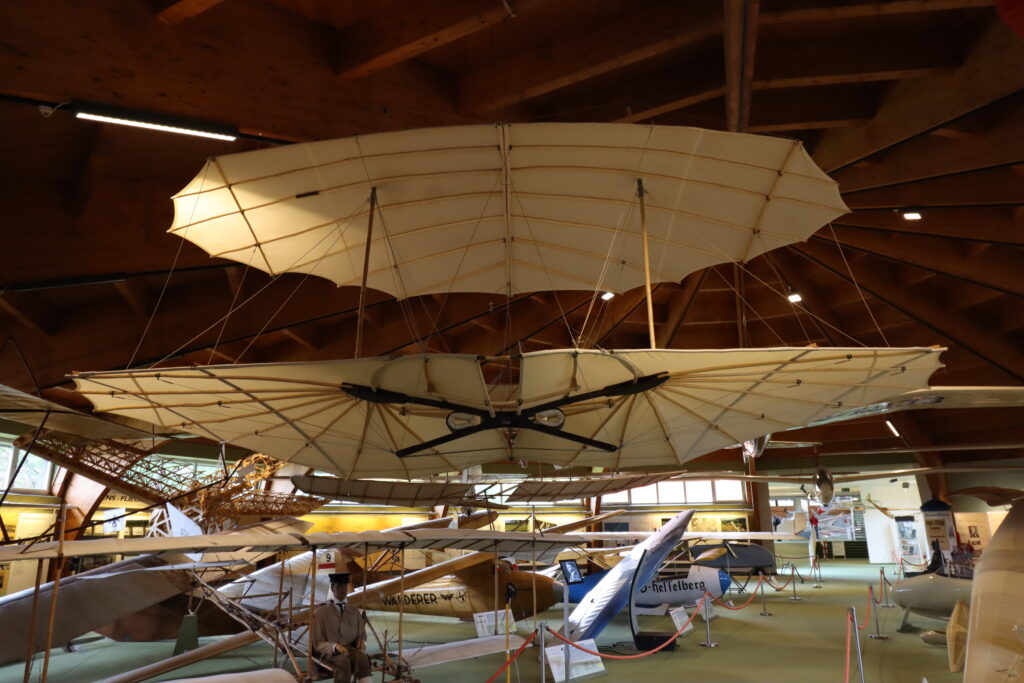
…some weird ones…
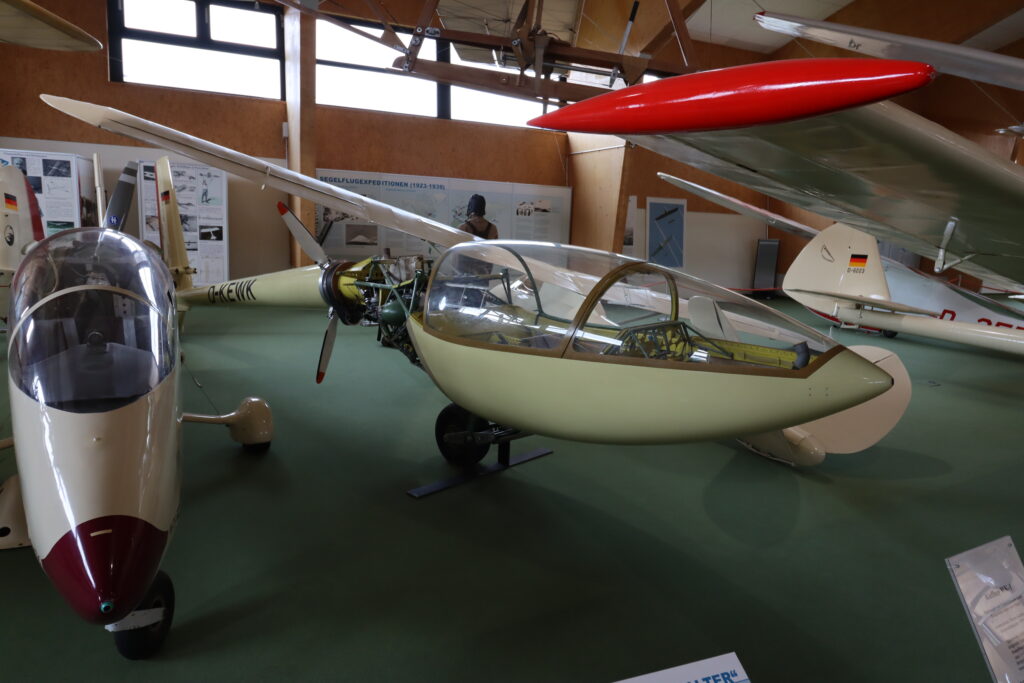
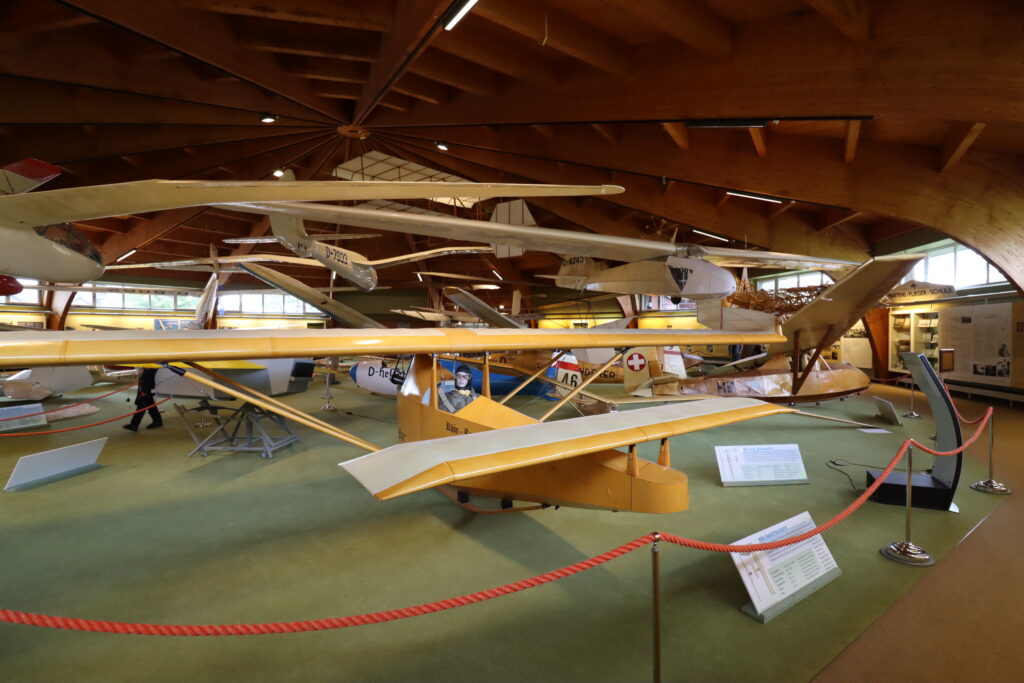
…and even a Rhönlerche, the one I learned flying on in 1977.
